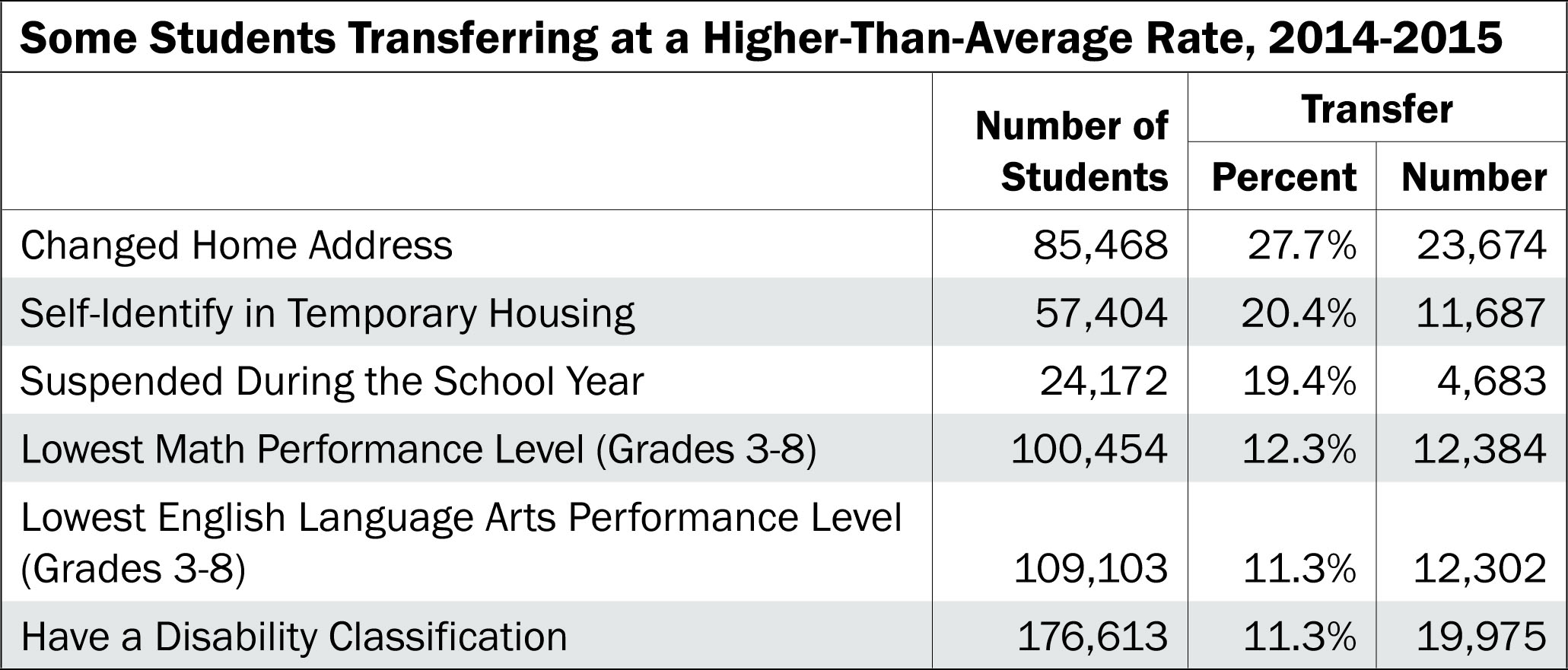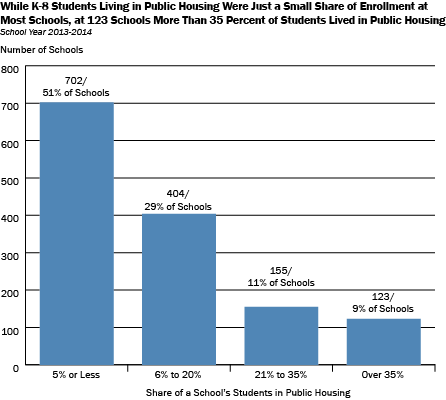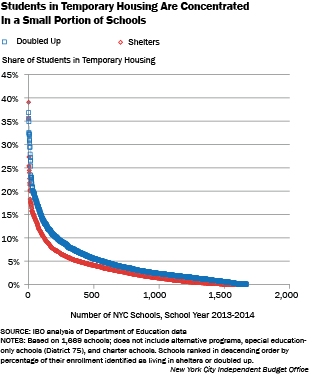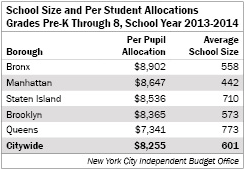Each school year there is considerable movement of students who transfer from one school to another or out of the city’s public school system altogether. To develop a clearer picture of the extent of this movement and some factors that may prompt these transfers and exits from the school system, we tracked the mobility of students enrolled in the city’s traditional public schools and charter schools over a one-year period from the start of school year 2014-2015 to the start of the next school year. There were 1.043 million students enrolled in grades K-12 at the start of this period. When you take into account the students who graduated from high school or moved on, for example, from elementary school to middle school, you are left with 872,863 students.
- More than 730,000 students remained in the same school from the start of school year 2014-2015 to the start of the next school year—a stability rate of 84 percent. This rate was higher in grades K-8 (84 percent) than in high schools (82 percent). The 2014-2015 stability rate was 2 percentage points higher than the rate for 2011-2012.
- More students transferred schools (77,800, or 9 percent) than exited the system either to go to a private school or a school outside the city (51,500, or 6 percent) or dropped out or otherwise left the school system without graduating (13,300, or less than 2 percent). Transfers occur for a variety of reasons ranging from transfers prompted by the Department of Education to improve a student’s opportunities for learning to temporary transfers to a school or program, to elective transfers by the family, including to and from charter schools.
- Not all transfers or exits are permanent. Some of the 142,617 students who initially transferred or exited switched again during the 2014-2015 school year or in the following summer. Nearly 2,700 students who transferred or exited returned and earned a credential later that same year.
- Not surprisingly, students who have changed home addresses from one year to the next transferred schools within the public school system at the highest rate. Nearly 28 percent of the almost 85,500 students who changed home addresses transferred schools during the period we examined.
- Students who self-identify as living in temporary housing at some point in the school year also transferred schools at a higher-than-average rate. Over 20 percent of these 57,400 students transferred schools.
- Over 19 percent of the nearly 24,200 students who were suspended at some point in the school year transferred schools.
- Students who scored at the lowest level on the grades 3-8 English language arts and math tests also transferred schools at above-average rates: 12 percent of the 100,500 students who scored at the lowest level on the math test and 11 percent of 109,000 students at the lowest level on the English test.
- Over 11 percent of the 176,600 students classified as having a disability also transferred schools.
Prepared by the Education Research Team
New York City Independent Budget Office
Print version available here.
SOURCE: IBO analysis of Department of Education data
| New York City By The Numbers |




